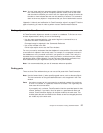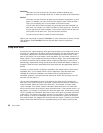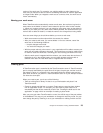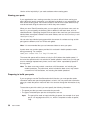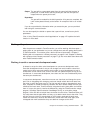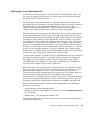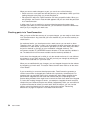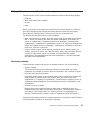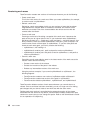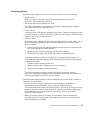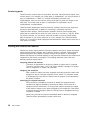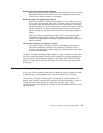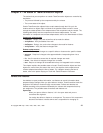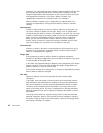
Finding different versions of TeamConnection objects
TeamConnection version control maintains different versions of the following objects:
v Releases
v Work areas (and driver members)
v Drivers
v Parts
When you want to find and retrieve previous versions of these objects, it is helpful to
know how TeamConnection creates and deletes previous versions of each object.
Some basics of TeamConnection versioning will help you understand how
TeamConnection identifies unique versions of objects:
v When you first create an object, the initial version name is the object name suffixed
with
:1
. When you create a new work area called
myWorkArea,
for example, its
version is
myWorkArea:1.
Subsequent versions are identified in numerical order:
myWorkArea:2, myWorkArea:3, myWorkArea:4, and so on. Versions of releases and
drivers are identified similarly: myRelease:1, myRelease:2, myRelease:3; myDriver:1,
myDriver:2, myDriver:3; and so on.
v Unique versions of parts are identified by association with a specific version of a
release, work area, or driver. Your TeamConnection family may have three different
versions of a part called
myPart,
for example: one associated with release
myRelease:2, one associated with work area myWorkArea:1, and one associated
with work area myWorkArea:2.
Versioning releases
TeamConnection creates new versions of releases whenever you do the following:
v Create a release
This is the initial version of a release and contains no parts. When you create
myRelease, for example, its version name is myRelease:1 and it contains no parts.
v Commit a work area to the release
Committing a work area to a new release creates a new version of the release and
adds the parts in the work area to the release. When you commit work area
myWorkArea:1, for example, to myRelease:1, TeamConnection creates a version of
myRelease called myRelease:2. It also associates the parts in myWorkArea:1 with
myRelease:2.
v Commit a driver to a release
Because drivers are simply collections of work areas, committing a driver to a
release has the same effect as committing a work area: TeamConnection creates a
new version of the release. When you commit myDriver:2 to myRelease:2, for
example, TeamConnection creates a version of myRelease called myRelease:3.
TeamConnection deletes versions of releases whenever you prune the release. Refer to
the
Administrator’s Guide
for an explanation of pruning.
Chapter 3. The basics of using TeamConnection 35



